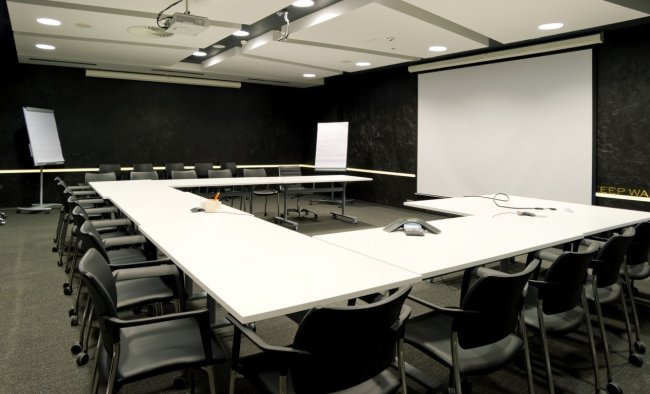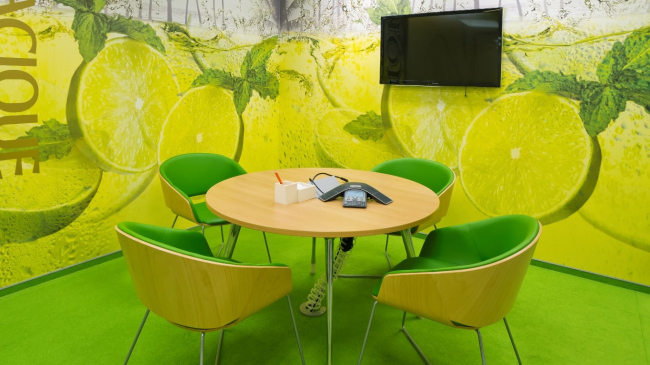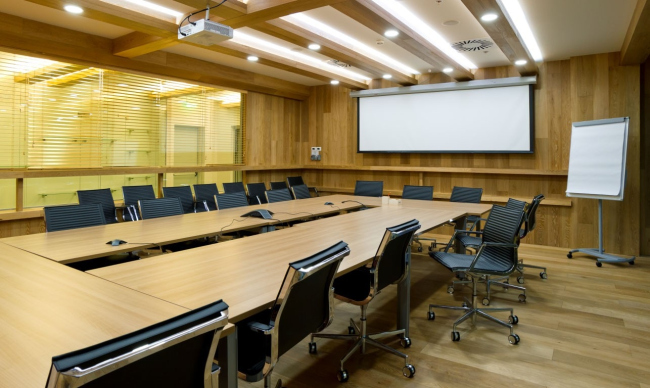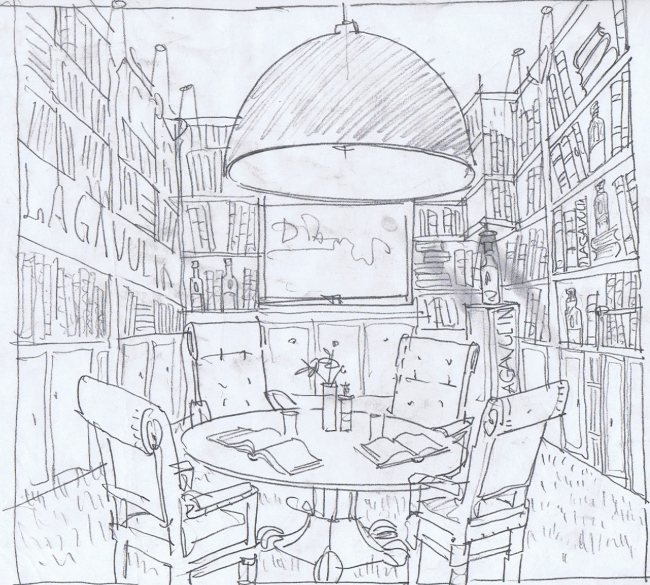Diageo is the true empire of elite liquor. Eight of the
world's twenty best-selling brands, including Johnnie Walker, White Horse and
Crown Royal whiskey, Smirnoff vodka, Baileys liqueur, Captain Morgan rum,
Gordon's gin, and Guinness beer, are produced by this particular company. Making
plans on establishing a new representative office in
The design of the entrance lobby suggested itself: the
background of the reception desk is a backlit wall that bears photo-printed
images of Diageo most famous beverages. The liquor theme is also supported by
the ceiling design: the numerous lights are concealed behind the snow-white
plaster slabs whose shape vaguely resembles ice cubes.
"One could say that the essence of the commissioner's specifications came down to but one word - "identity" - Sergey Estrin reminisces - We had the task of enhancing, in the interior that we created, the identity of each of the brands". Luckily, the very structure of the new office lent itself to this - each of the brands, two brands maximum, was to get a dedicated meeting room. The square footage of these premises varied considerably depending on the importance and popularity of this or that beverage but their total number was so large (over 20) that the architect almost at once proposed to group them along the outer perimeter of the rented floor. Thus, the office got a "street" of elite alcohol of sorts – a street that belts the main open space where the working places of the employees are situated. Approving the layout that the architect proposed, the commissioner made his requirements to the interior a little more specific: the "main bet" was to be placed on the design of the "visiting cards" of the brands, while the working places were to be designed in the key of ultimate functionality and efficiency.
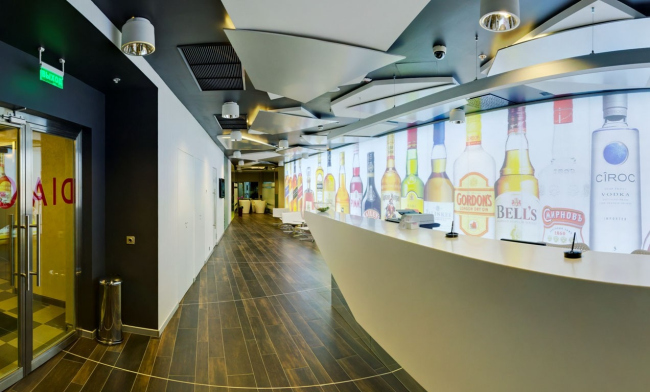
Hence the laconism of the design
of the "street" - from the outside the meeting rooms look just about
the same. Each of them is accessed via an opaque glass door decorated with a
stylized image of a bottle. The only thing that makes them different from one
another is the color and the name of the brand itself that is also doubled on
the plaques hung along the corridor and helping the visitors to quicker find
their way around in the "drinks on offer". The meeting room entrances
are also highlighted with a different color of floor coating - generally, the
open space uses the carpet of noble dark gray color, and from under the doors
shoot the carpeting strips of bright colors, as if the drinks somehow had found
a way to seep outside. These bright colorful accents spread further all over
the office - the architects use similar colors for decorating the partitions
between the employees' desks, which gives the reserved atmosphere of open space
a tangible drop of lightness and positive energy.
As for the design of the meeting rooms, Sergey Estrin
mentions with regret that the architects were not able to implement all of
their ideas, even those that had originally been approved. The architects
worked really carefully on the image of each of the brands, but, as it often
happens, the budget and the time constraints left their doubtless mark. Still,
the architects were able to keep the main idea - the office of Diageo sports a
whole galaxy of bright rooms of various premises that visualize the diversity
of the company's product.


For example, for the "representative office"
of the famous single malt Scotch whiskey Talisker, the architects designed a
room that imitates a small malt distillery built from brick. The original
sketches, according to Sergey Estrin, had a lot more brutalism to them, though:
it was supposed that real bricks would be used (and not tiles), which would be
very functional as well. Just as brutal the room of Captain Morgan and White
Horse was going to be - the aesthetics of rum suggested to the authors the idea
of designing the interior from bog wood, decorating the bare beams with
metallic rivets. In reality, the mess room of the pirate ship does not look so
"hard-boiled" - light shade and a polished surface of the laminate
create a more intimate effect, even ostentatiously pristine.
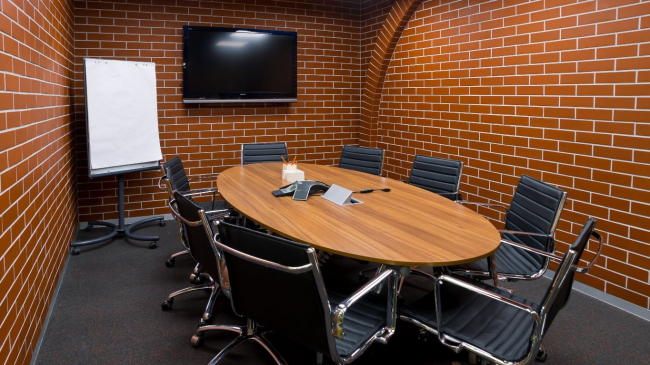
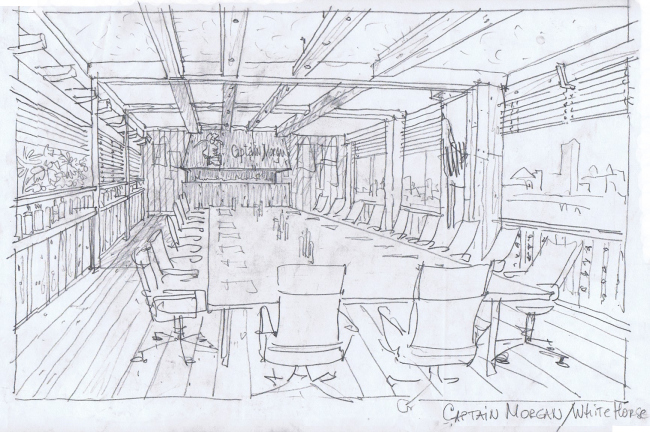
The architects, however, were able to implement the
closest of all to the original idea Diageo's largest meeting room - some sort
of a "Joint Staff" of all the sorts of whiskey on offer. The walls of
this room are decorated with black stucco that has the texture of drained hide,
while on the level of vision of the people sitting round the tables the
architects ran a narrow stripe of LED backlight. This golden stitch, without
being all too garish, reminds one of the noble colors of aged whiskey.
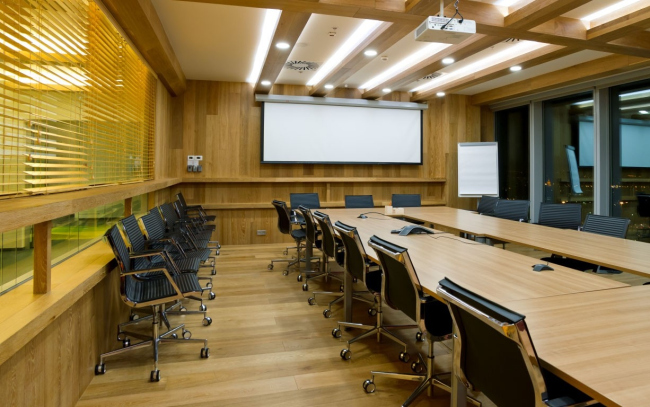
Very vivid character was also given to the meeting
room dedicated to the Venezuelan rum Cacique. Here the walls are decorated with
bright photo-prints of cocktails the recipe of which includes this beverage. In
fact, from the inside the room looks very much like a glass that is filled up
to the line of vision of the people who are in it: from the brink of the
"waterline" and up to the ceiling, multicolored drops splash up.
